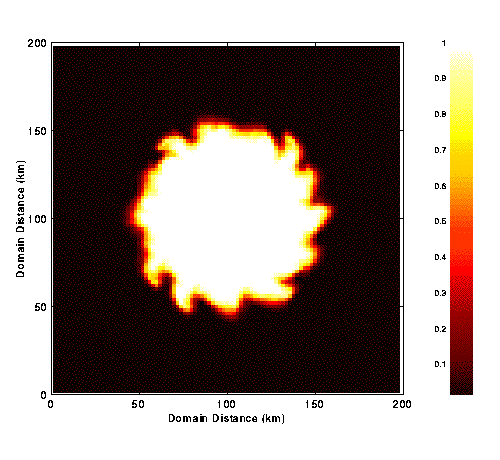
The following set of plots derive from our experiment (h=1500m, r=50km, N=0.5x10-3s-1, f=10-4s-1). The first shows the horizontal section of tracer after 5 days at a depth of -650m (that is, mid-way down the chimney), the second shows the corresponding vertical section (north-south through the centre of the domain) of in-situ temperature.

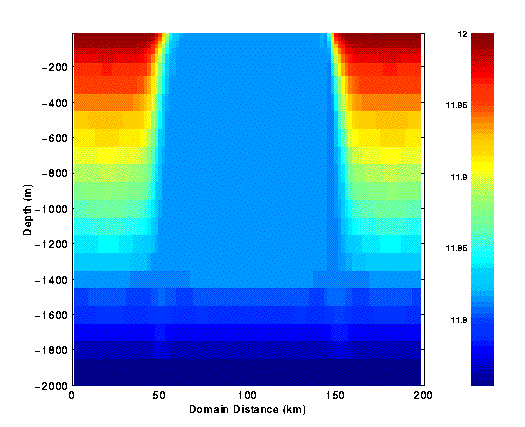
During the earliest stages of collapse, `bowing-up' of near-surface isopycnals surrounding the chimney, creates a sharp BAROCLINIC ZONE and associated RIM CURRENT in thermal wind balance, encircling the mixed-region. After 5 days (the two plots above) baroclinic instability with mode number 14 is readily discernable and as time proceeds (day 20 - the next two plots) these early meanders in the rim are breaking in to finite amplitude geostrophic eddies.
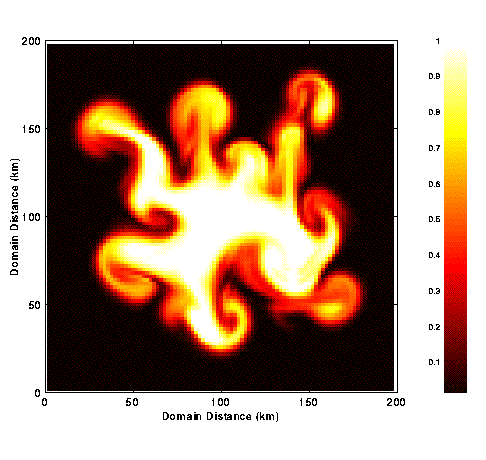
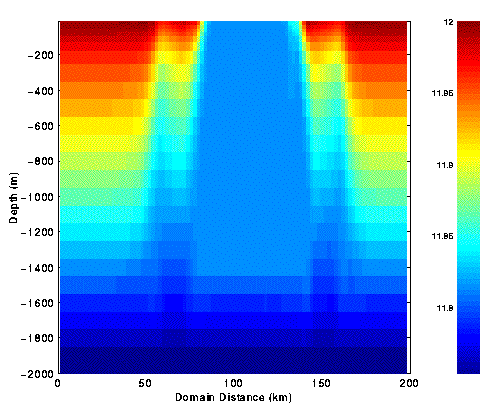
It is these eddies (days 35 (the next two plots) and 50 (the final pair)) that transport mixed-water away from the chimney site.
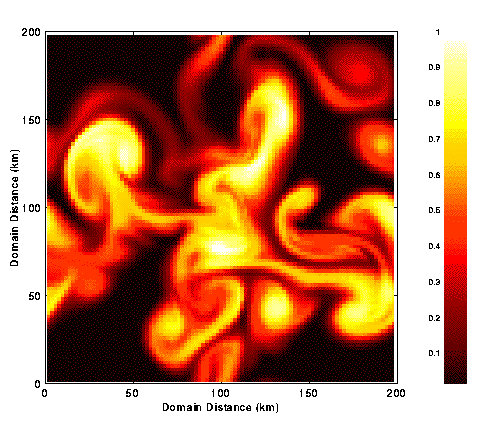
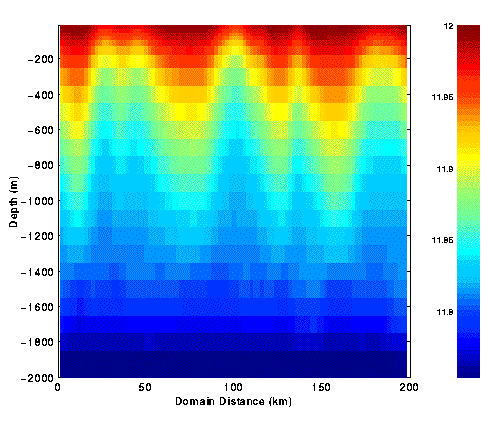
By day 50 (below) it is clear that restratification is more or less complete though it is interesting to see the surviving tracer distribution at this time (the final plot TO BE ADDED)
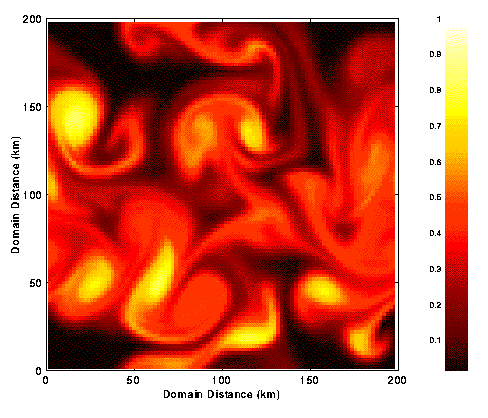
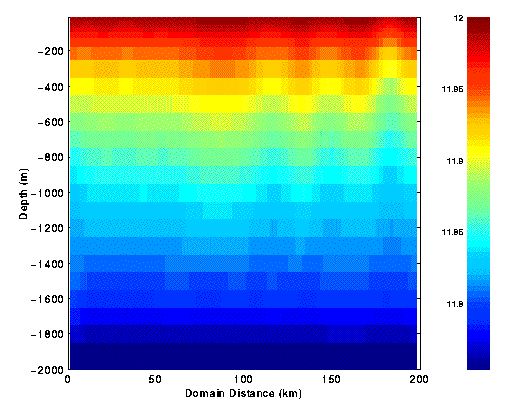
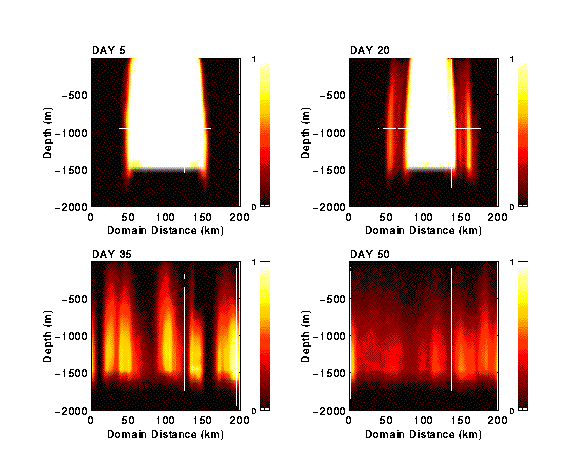
Back to the top